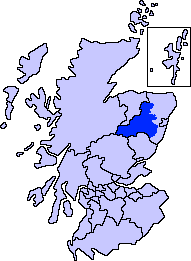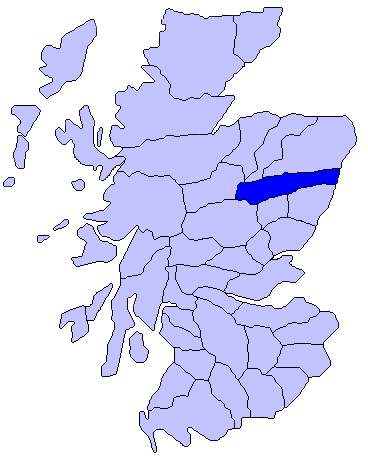Marr on:
[Wikipedia]
[Google]
[Amazon]
 Marr (
Marr (
 Marr is named after Mar, one of the historic provinces of Scotland, extending from north of the Don southward to the
Marr is named after Mar, one of the historic provinces of Scotland, extending from north of the Don southward to the
 Marr (
Marr (Scottish Gaelic
Scottish Gaelic ( gd, Gàidhlig ), also known as Scots Gaelic and Gaelic, is a Goidelic language (in the Celtic branch of the Indo-European language family) native to the Gaels of Scotland. As a Goidelic language, Scottish Gaelic, as well as ...
: ''Màrr'') is one of six committee areas in Aberdeenshire
Aberdeenshire ( sco, Aiberdeenshire; gd, Siorrachd Obar Dheathain) is one of the 32 council areas of Scotland.
It takes its name from the County of Aberdeen which has substantially different boundaries. The Aberdeenshire Council area inclu ...
, Scotland
Scotland (, ) is a country that is part of the United Kingdom. Covering the northern third of the island of Great Britain, mainland Scotland has a border with England to the southeast and is otherwise surrounded by the Atlantic Ocean to ...
. It has a population of 34,038 (2001 Census). Someone from Marr is called a ''Màrnach'' in Scottish Gaelic
Scottish Gaelic ( gd, Gàidhlig ), also known as Scots Gaelic and Gaelic, is a Goidelic language (in the Celtic branch of the Indo-European language family) native to the Gaels of Scotland. As a Goidelic language, Scottish Gaelic, as well as ...
.
Etymology
The genesis of the name ''Marr'' is uncertain. ''Mar'', a Brittonic personal name, may be involved. Further possibilities include a connection with the ethnic names ''Marsi'' and ''Marsigni'' of Italy and Bohemia, or a derivation fromOld Norse
Old Norse, Old Nordic, or Old Scandinavian, is a stage of development of North Germanic dialects before their final divergence into separate Nordic languages. Old Norse was spoken by inhabitants of Scandinavia and their overseas settlement ...
''marr'' meaning "sea, marsh, fen".
American academic Thomas Clancy has noted cautiously the similarity between the territory names ''Buchan
Buchan is an area of north-east Scotland, historically one of the original provinces of the Kingdom of Alba. It is now one of the six committee areas and administrative areas of Aberdeenshire Council, Scotland. These areas were created by ...
'' and ''Marr'' to those of the Welsh commotes '' Cantref Bychan'' and ''Cantref Mawr
Cantref Mawr was a cantref in south-west Wales. It was of strategic importance in medieval Wales as the location of the main seat of the princes of Deheubarth at Dinefwr.
''Cantref Mawr'' means "The Great Cantref". Each cantref in medieval Wale ...
'', meaning "large-" and "small-commote", respectively. Linguist Guto Rhys adjudged the proposal "appealing" but "questionable", on the basis that the form ''Marr'' conflicts with the expected development of ''mawr''. Features
To the west, the mountain environment of theCairngorms
The Cairngorms ( gd, Am Monadh Ruadh) are a mountain range in the eastern Highlands of Scotland closely associated with the mountain Cairn Gorm. The Cairngorms became part of Scotland's second national park (the Cairngorms National Park) on 1 S ...
National Park
A national park is a natural park in use for conservation purposes, created and protected by national governments. Often it is a reserve of natural, semi-natural, or developed land that a sovereign state declares or owns. Although individual ...
sustains a well-developed tourist industry based on heritage and outdoor pursuits. Forestry and livestock farming are key industries, particularly in remoter areas. Part of the area has qualified for EU financial assistance. To the east, Marr has experienced population growth due to its strong commuter links with the city of Aberdeen
Aberdeen (; sco, Aiberdeen ; gd, Obar Dheathain ; la, Aberdonia) is a city in North East Scotland, and is the third most populous city in the country. Aberdeen is one of Scotland's 32 local government council areas (as Aberdeen City), a ...
.
The committee area consists of three wards of Aberdeenshire council:
*Aboyne, Upper Deeside and Donside
*Banchory and Mid-Deeside
*Huntly, Strathbogie and Howe of Alford
Between them the three wards elect 10 councillors to the sixty-eight member council.
Historic province
Mounth
The Mounth ( ) is the broad upland in northeast Scotland between the Highland Boundary and the River Dee, at the eastern end of the Grampians.
Name and etymology
The name ''Mounth'' is ultimately of Pictish origin. The name is derived from ...
. Like other such areas, it was under the rule of a mormaer
In early medieval Scotland, a mormaer was the Gaelic name for a regional or provincial ruler, theoretically second only to the King of Scots, and the senior of a ''Toísech'' (chieftain). Mormaers were equivalent to English earls or Continental c ...
in the Middle Ages
In the history of Europe, the Middle Ages or medieval period lasted approximately from the late 5th to the late 15th centuries, similar to the post-classical period of global history. It began with the fall of the Western Roman Empire ...
. In the 12th century an earl
Earl () is a rank of the nobility in the United Kingdom. The title originates in the Old English word ''eorl'', meaning "a man of noble birth or rank". The word is cognate with the Scandinavian form ''jarl'', and meant " chieftain", particu ...
(the Earl of Mar
There are currently two earldoms of Mar in the Peerage of Scotland, and the title has been created seven times. The first creation of the earldom is currently held by Margaret of Mar, 31st Countess of Mar, who is also clan chief of Clan Mar. T ...
) took his place, but no definite succession of earls appears until the 13th century, nor has any genealogical connection been established between them and the mormaers.
In the eleventh century Malcolm III introduced the office of sheriff to Scotland. He and his successors Edgar
Edgar is a commonly used English given name, from an Anglo-Saxon name ''Eadgar'' (composed of '' ead'' "rich, prosperous" and '' gar'' "spear").
Like most Anglo-Saxon names, it fell out of use by the later medieval period; it was, however, r ...
, Alexander I Alexander I may refer to:
* Alexander I of Macedon, king of Macedon 495–454 BC
* Alexander I of Epirus (370–331 BC), king of Epirus
* Pope Alexander I (died 115), early bishop of Rome
* Pope Alexander I of Alexandria (died 320s), patriarch of A ...
and in particular David I David I may refer to:
* David I, Caucasian Albanian Catholicos c. 399
* David I of Armenia, Catholicos of Armenia (728–741)
* David I Kuropalates of Georgia (died 881)
* David I Anhoghin, king of Lori (ruled 989–1048)
* David I of Scotland ...
established sheriffdom
A sheriffdom is a judicial district in Scotland, led by a sheriff principal. Since 1 January 1975, there have been six sheriffdoms. Each sheriffdom is divided into a series of sheriff court districts, and each sheriff court is presided over by a r ...
s throughout the country. In the mid 19th century, local government reforms replaced the ancient provinces with new counties (''shires''), aligned to sheriffdom boundaries; hence, Marr became the southern portion of the shire of Aberdeen.
References
{{Coord, 57, 13, 35, N, 2, 46, 38, W, display=title, region:GB_type:landmark_source:dewiki